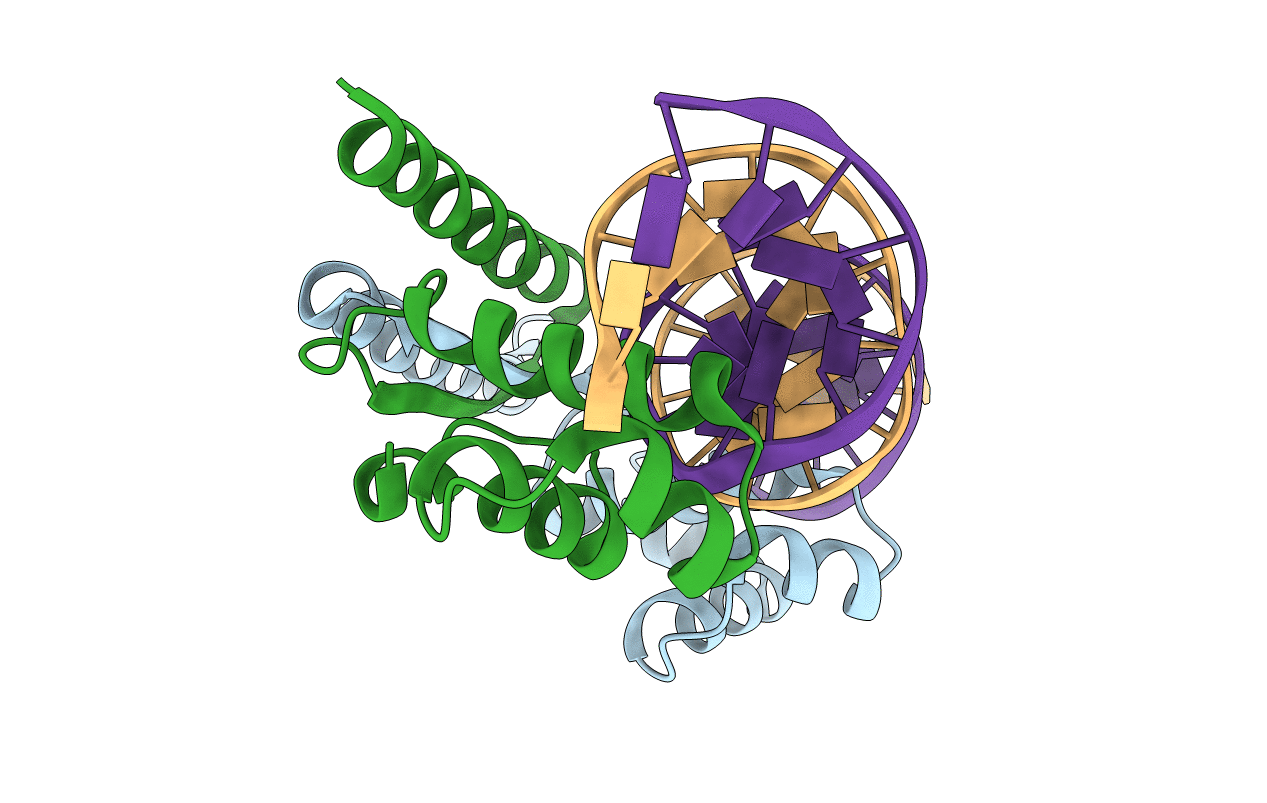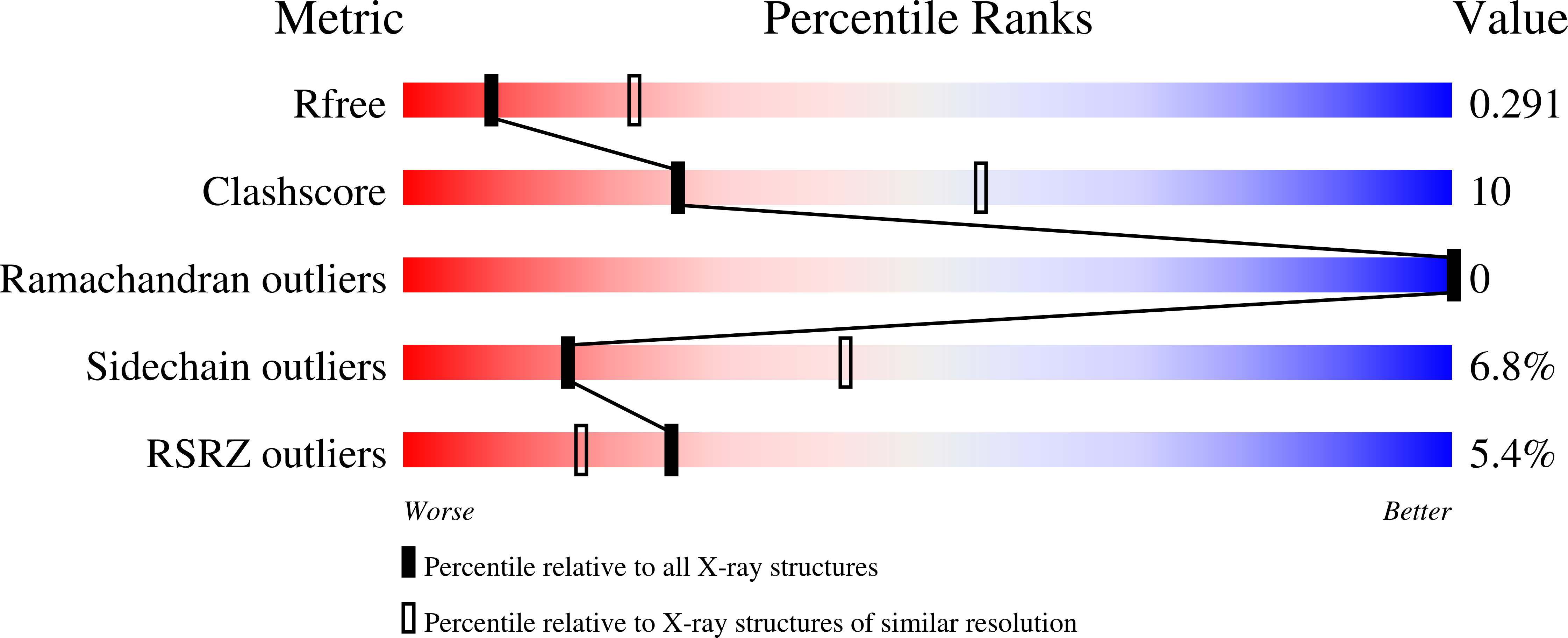
Deposition Date
2020-12-18
Release Date
2022-07-13
Last Version Date
2024-11-13
Entry Detail
PDB ID:
7BCA
Keywords:
Title:
Crystal structure of the HTH DNA binding protein ArdK from R388 plasmid bound to a direct-repeat DNA element
Biological Source:
Source Organism:
Escherichia coli K-12 (Taxon ID: 83333)
Host Organism:
Method Details:
Experimental Method:
Resolution:
2.80 Å
R-Value Free:
0.29
R-Value Work:
0.23
R-Value Observed:
0.23
Space Group:
C 1 2 1


